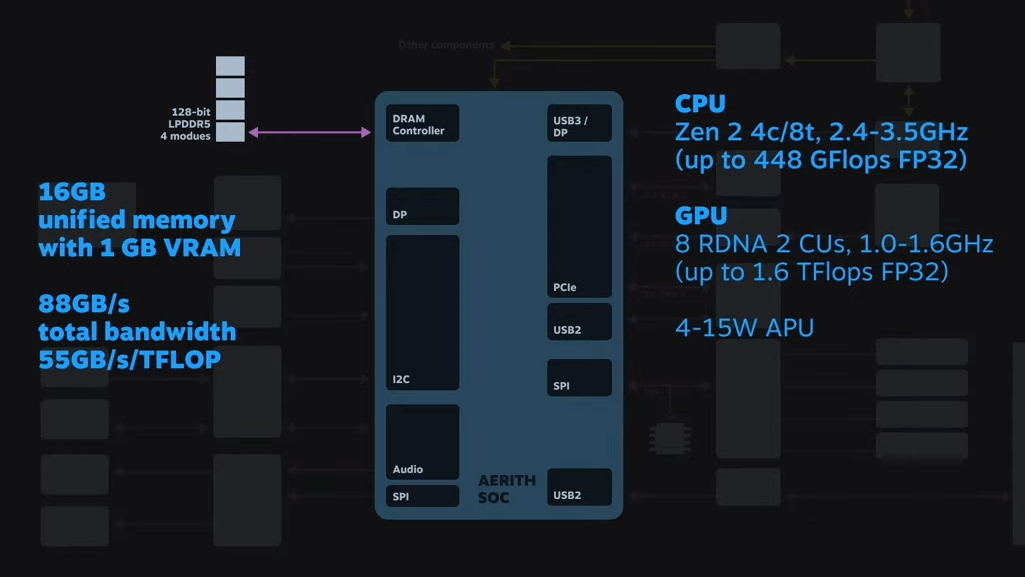What just happened? Valve used the recent Steamworks Virtual Conference to reveal new details about the upcoming Steam Deck, including a Final Fantasy VII-inspired codename for the custom SoC powering the handheld machine: Aerith.
Valve has revealed a lot of information on the Steam Deck recently, and not all of it good – it seems the chip shortage will be delaying the first units' launch from December to February. But the live stream delved more into the technical aspects of the mini console. We know that the Steam Deck uses a combination of Zen 2 cores and the same RDNA 2 graphics engine found in the company's Radeon RX 6000-series, giving it access to features such as FidelityFX Super Resolution (FSR) and DirectX 12 Ultimate.
The 7nm chip had been referred to as Van Gogh---as in the Van Gogh APUs---but the specific SKU used in the Steam Deck goes by the codename Aerith. The Aerith SoC boasts four cores/eight threads with clock speeds between 2.4 GHz and 3.5 GHz; Valve said that it wants to aim for consistent speeds rather than squeezing the highest boosts out of the chip. It has a peak FP32 (single-precision) performance up to 448 GFLOPs, slightly slower than a Ryzen 3 Pro 4450U.
The GPU, meanwhile, offers 8 Compute Units with clocks between 1 GHz to 1.6 GHz and has an FP32 performance of up to 1.6 TFLOPS. That latter stat might sound disappointing, but we know the metric isn't great for measuring performance---Valve has shown plenty of games hitting 60 fps.
Elsewhere, Aerith has a TDP from 4W to 15W. While Valve has not implemented a thermal power limit on the SoC, it urges developers to use a framerate limiter in their titles; Valve will enforce the limiter at some point in the future. The company previously confirmed that the Steam Deck would offer the same performance whether docked or undocked, and there could be cases, such as on hot summer days when used outdoors, that it may need to reduce power draw to maintain clock speeds. This would cap charge rates, download speeds, or SSD bandwidth.
We already knew the Steam Deck would use 16GB of quad-channel 32-bit LPDDR5 memory with speeds up to 5,500MT/s. Not only does this future-proof the device, but it's also an ideal pairing for the bandwidth-loving APU.
Finally, Valve talked about the 40 Whr battery that should offer around 7 - 8 hours of gaming. It can also support two 4k screens at 60hz via an integrated USB3 Gen2/DisplayPort 1.4 DSC connector, and there's a 45W charging cable that allows the Steam Deck to be charged while gaming, as well as the attachment of some peripherals.
The first Steam Decks should arrive in February 2022.
